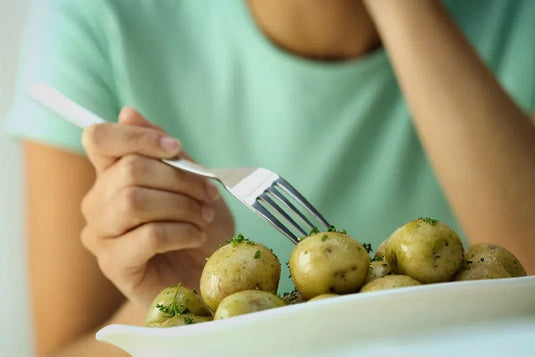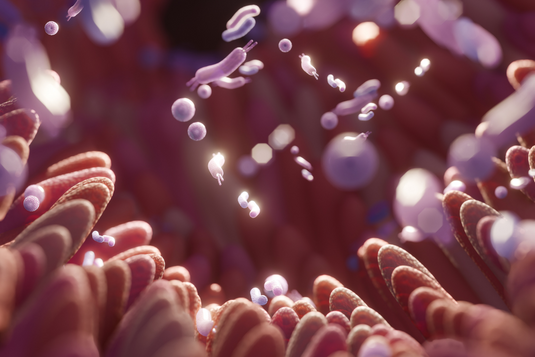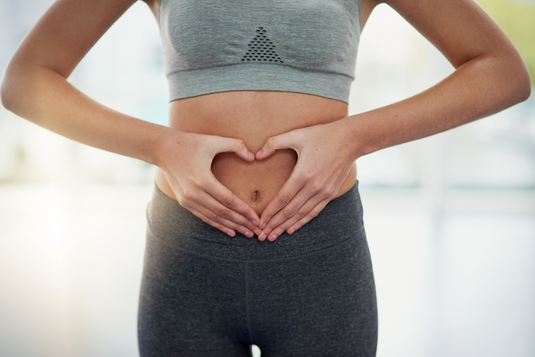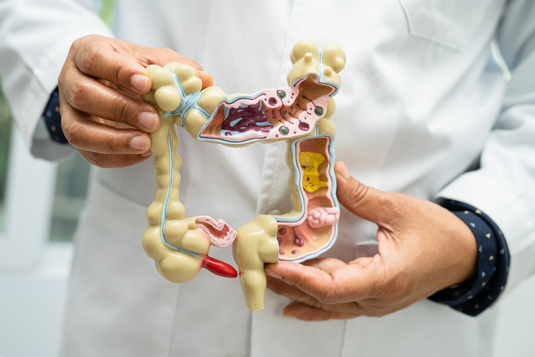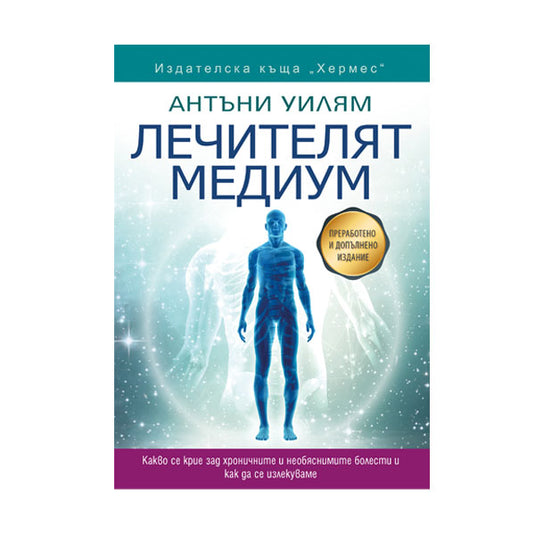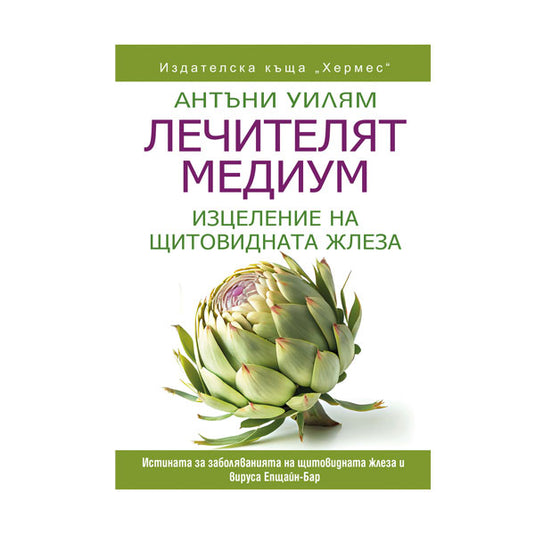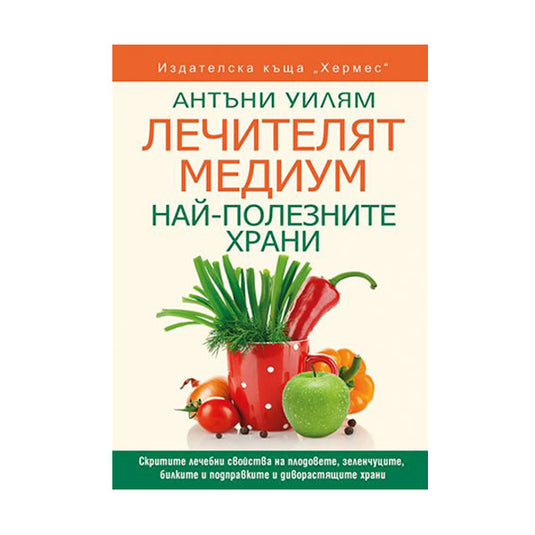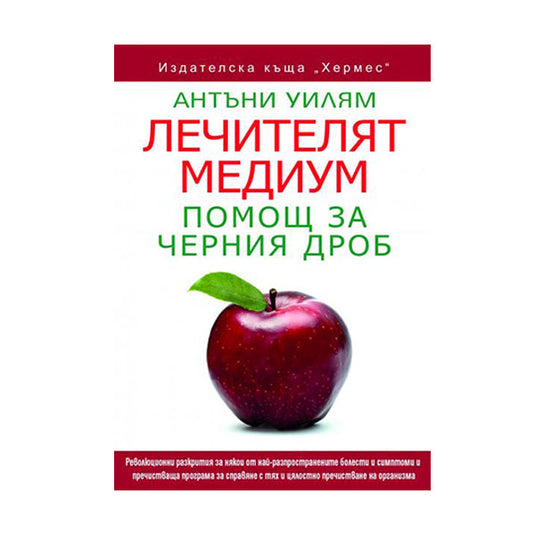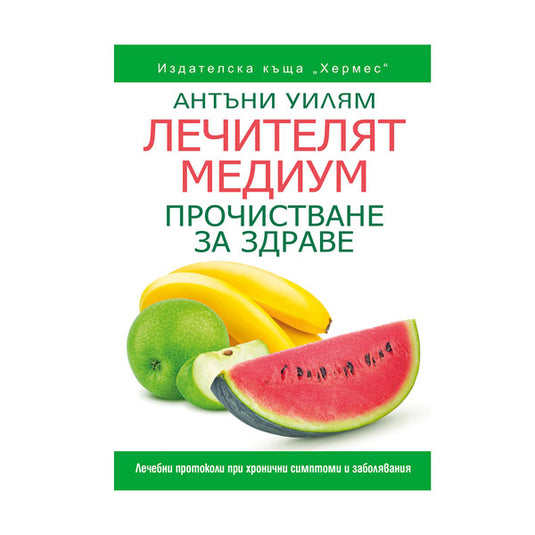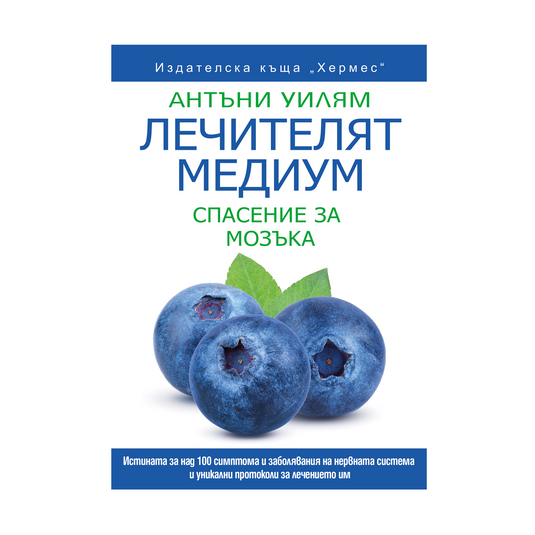Monofood can be an amazing method of recovery from certain health problems. It has several uses, most notably for treating bowel and food allergies. Monofeeding also saved Anthony William's life when he suffered from food poisoning as a child.
When a person is facing digestive problems, it can be very difficult for them to decide what to eat. Many people struggle with celiac disease, colitis, Crohn's disease, irritable bowel syndrome, bacterial overgrowth in the small intestine , constipation, diarrhea, cramping, stomach pain and bloating . They switch from one fad diet to another in a desperate attempt to find the food that will help them. This is quite understandable when diagnoses do not help a person to find a solution to his problems.
One unknown aspect of many digestive problems is viral and bacterial activity. Both viruses and non-productive bacteria can colonize the mucous membranes of the intestinal tract. There, these pathogens will feed on the pests they pass by – pathogenic foods ranging from eggs, dairy and gluten to toxic heavy metals. When bacteria grow, they can irritate and inflame the lining, and when some viruses grow, they release neurotoxins that are highly allergenic to the gut's nerve endings in that lining. Viruses and bacteria often live in the liver as well. When viruses are there, they often produce neurotoxins that can reach the digestive tract. Any of these things can cause digestive discomfort, stomach cramps, intestinal cramps, excess gas, or even a case of ulcerative colitis.
Monofeeding aims to solve this dilemma. By "mono" we don't mean mononucleosis, just "single." This way of eating consists of eating very simply, sticking to just one or two (and sometimes three) specific foods to help your digestive tract recover. The techniques we'll cover in this article are aimed at bringing life back to the stomach glands that produce stomach acid so that hydrochloric acid can be restored to break down food. These techniques also improve the condition of the liver. Monofeeding can cleanse the liver, restoring it so that bile production can properly break down fat.
These protocols are ideal for people with a hypersensitive intestinal tract because the included foods have a calming effect. At the same time, these mono-eating plans starve pathogens such as viruses and bacteria, which are very often the cause of gastrointestinal disturbances. Monofeeding also offers your body a gentle detox that doesn't overload your body.
For these reasons and more, monoeating can be an invaluable recovery technique from the flu, stomach infections, food poisoning, food allergies or sensitivities, eating disorders, starvation, ulcers, or when overwhelming hardship or stress has put a strain on digestion. When you're going through any of these physical and emotional states, monoeating is the perfect choice.
CLEANSING WITH MONO-FEEDING OF THE HEALING MEDIUM
Monofeeding differs from other Healer Medium cleanses. It does trigger a gentle detox or mini-cleanse that will help you realign and clarify your senses, but its main purpose is to improve your relationship with food.
What
- Optional: After waking up, drink 500 ml - 1 l of water with lemon or lime. Wait 15-30 minutes, then:
- Drink 500 ml of celery stem juice on an empty stomach. Ideally, increase to 750ml and then up to 1L of juice by lunchtime. If necessary, divide into 2 portions - 500 ml in the morning and 250-500 ml later. Follow the usual recommendations - wait at least 15-30 minutes before consuming anything.
- Choose one of the mono meal options listed below to eat small portions throughout the day. You can start in the morning or around noon, depending on how hungry you are, how much celery juice you've had, and how much energy you need in the morning. Until the end of the Pro-cleanse with mono-eating, you will only eat this food. For example, if you stick to banana and lettuce, you will eat only that all day and all days of the cleanse.
- Optional: you can drink cucumber juice in the afternoon. This is not mandatory and it should not replace the morning celery juice .
- Do not use salt, spices and flavors. With this protocol, the simpler you eat, the better. Do not add products such as oil, butter, yogurt, tamari or coconut aminos to your food. Stick to the specific foods of your chosen mono-eating plan. Fresh lemon juice is suitable for flavoring.
- Every day, drink 1 liter of water in addition to the morning water with lemon or lime, which is optional. Be sure to drink them separately from the celery stalk juice. Try not to drink water while eating. During the monofeed cleanse, you can drink a little coconut water, but without artificial colors or flavors. Coconut water is separate from the one liter of water you should drink.
Single meal options
Here are the options when choosing a mono meal plan. Read more about each of these options further down in this article. Also remember that whichever you choose, you will start each day with celery stalk juice as described above.
- Banana (optional with salad)
- Papaya (with optional lettuce)
- Banana + papaya (with optional lettuce)
- Steamed potatoes (with optional salad)
- Steamed peas (with optional salad)
- Steamed pumpkin + green beans, Brussels sprouts or steamed asparagus (with salad of choice)
Duration
- Try the mono food cleanse for a minimum of one week.
- If necessary, you can also apply the regimen long-term. For example 1, 3 or 6 months or even 1-2 years.
- Determining how long to follow the monofeeding protocol is individual. This depends a lot on what condition you were in when you started and how long it takes for your body to heal. Keep in mind, for example, that if you have inflammation in your digestive tract, whether it's in your stomach, duodenum, small intestine, or colon, it will take time to kill bacteria and viruses and repair your gut lining while improving hydrochloric acid. and increase the production of bile in the liver. Be persistent and don't get discouraged if you don't feel better from the start. The day will come when you will start to feel the results.
- To return to a more varied menu, follow the instructions in the article "Healer Medium's 3:6:9 Purge Exit Period" .
Reasons
- Celery juice is an essential part of a mononutrient cleanse because it kills the viruses and bacteria that cause many digestive problems, and celery juice is crucial for nervous system and brain function. It delivers valuable sodium into the blood to keep you stable. It is important to drink enough celery stalk juice , starting with 120ml if needed and gradually increasing to 500ml, ideally 1L per day to deal with cravings for other foods. The sodium cluster salts in celery stalks really help with this.
- As you've already read, monoeating calms the digestive tract and allows your body to enter a mild state of detoxification. The body receives valuable nutrients, the stomach and intestines rest from the work of digesting radical fats and heavy foods and return to their normal functioning, which favorably affects your overall state of health.
- Monoeating keeps away the foods that give energy to viruses and pathogenic bacteria, degrade the quality of hydrochloric acid, and deplete the liver. When you one day return to a more varied diet, you will be able to identify which foods are causing you problems and should be avoided.
MONONUTRITION AND DEFICIENCIES
If you're worried about monoeating deficiencies, keep in mind that by starting a monoeating cleanse, you're already deficient. Everyone has deficiencies, whether they live with digestive problems, chronic illnesses, or even if they feel well and don't complain of any symptoms.
Correct implementation of the monofeeding regime will not lead to a deficiency. It will do the exact opposite. Not only will mononutrition provide critically needed healing phytochemicals, antioxidants, trace elements, minerals, antiviral compounds, and antibacterial compounds, it will help repair damaged mucous membranes and starve out the viruses and nonproductive bacteria that originally created these lesions. mucous membranes. At the same time, monofeeding can help restore hydrochloric acid, which will help you better break down proteins and other nutrients in food and kill viruses and bacteria naturally.
Even if you follow the principles of this protocol for a long time, it will not only not deprive you of valuable substances, but will also fill their deficit.
IT'S ALL IN THE RIGHT FOODS
Monofood cleansing is not about choosing one food and only eating it, but choosing one of the options listed in this article and implementing it the right way. These options are nourishing and soothing to the stomach and intestines; they are not astringent, acidic, irritating and harsh like nuts, seeds and grains can be.
You may have heard that certain health professionals recommend eating only grapes. They don't realize that the astringency, acidity, and tartness of grapes can make a person with an indigestion even more uncomfortable.
Neither blueberries nor grapes are suitable for monofeeding, nor do they provide enough calories for prolonged monofeeding. Short-term (that is, a day or two) intake of these healing fruits is fine, though not recommended for people with chronic digestive discomfort or pain. All of these healing fruits are suitable as snacks and ingredients in a more varied diet so that you can access their healing benefits.
We can't rely on what we've been taught about sparing foods when making our choices for monofeeding. You can't choose eggs, for example, because as we already know, even if they don't seem irritating at the moment, they aggressively feed all the pathogens in the body, both in the intestinal tract and in other organs and circulation, aggravating the sensitive digestive system, and also thus, in the long run, they worsen any other conditions you may have been diagnosed with.
NUTRITIONAL SUPPLEMENTS AND MEDICINES
For guidance on the use of nutritional supplements during a mono-eating cleanse, refer to Chapter 27 "What You Need to Know About Nutritional Supplements" of Anthony William's book Cleansing for Health .
If you are taking medication, check with your doctor before starting the monofeed cleanse.
HOW TO CHOOSE A SINGLE MEAL PLAN
Each person faces a different combination of different pathogens, toxic heavy metals, and other toxins, so it can be difficult to know exactly which of these mononutrient options will work best for you. Don't overthink it. All of them are useful and you can try any of them. Experiment until you find the one you like best.
If you need time to get used to the idea of monofeeding for days, you can try one meal a day. For example, consider a dinner of plain steamed potatoes (with or without salad) or a breakfast of just bananas (with or without salad).
MORE ABOUT SINGLE MEAL OPTIONS
Let's note again that monoeating is not about choosing one type of food and eating only that for a while.
Whichever option you choose, start your day with lemon or lime water, followed by celery stalk juice . Anthony William recommends having your first meal at 10 a.m. if you're hungry. Sometime in the afternoon, eat a second portion of the same food. The last portion will be for dinner - a total of three "meals" per day. Another option is to consume 4-5 smaller portions or 2 larger ones. Experiment with smaller portions the first day and then increase them if you feel like it that the food didn't give you enough energy, or if you felt very hungry. You shouldn't eat too little on the first day either, but it wouldn't be good if you ate two kilos of potatoes in one go and then feel like you're going to burst There should also not be too long an interval between meals - your blood sugar may drop and you may feel sick or irritable if you do not get glucose and mineral salts in time.
Now let's take a closer look at the healing foods from the monofeeding options:
Celery stalk juice
So much can be said about the benefits of celery stem juice . We have published about 20 articles about celery stem juice on the Prirodnik blog alone, and if these are not enough for you - Anthony William has published a whole book about it called "Celery Juice" (not yet translated into Bulgarian). In it you will find answers to all your questions.
Lettuce
Needless to say, it is not advisable to consume lettuce as your only meal of the day. It does not contain enough calories and will not give you enough strength. If you decide to include lettuce in your mono meal, you should eat it on the same day as papaya, bananas, potatoes or steamed vegetables. You can eat it whole as a snack or side dish, use it as a base for a salad, wrap it in your food like a tortilla or taco, slice it or even puree it with your choice of mono meal.
Look for 'Winter Butterhead' lettuce when possible. Of all the varieties, it is the most gentle on the intestinal mucosa. Another such is red lettuce. Both have a very soothing effect and are easy to digest.
Banana
Bananas are suitable if you have a dynamic lifestyle. They are easy to find and do not require any time in the kitchen, and for the most part they are inexpensive. If you're worried about bananas having too much sugar, fear not. The calories in a banana aren't as many as you might think, and a banana isn't just made up of natural glucose. Bananas also contain bioavailable proteins, beneficial omega compounds, fiber, water, antioxidants and healing phytochemicals such as potassium. Foods high in potassium, such as bananas, are extremely beneficial for many ailments of the digestive system; this potassium content is part of what makes banana monofeeding so healing. Potassium helps regulate the heart's activity for cardiovascular health, nourishes the central nervous system and is beneficial for the nerves in the digestive tract.
Papaya
When a person has bowel movement problems, papaya, banana or papaya plus banana are very useful mono-food options. Papaya is useful for relieving persistent and chronic constipation and is also suitable for people with acute hydrochloric acid deficiency. (Symptoms may include extreme indigestion with bloating, stomach pain, inflammation, cramping, cramping, acid reflux , hiatal hernia, obstruction due to scar tissue or surgery, bowel disease.) If your constipation is more intermittent, you may add banana.
Steamed potatoes
Monofeeding with potatoes is ideal for people who have problems with loose bowels or too frequent bowel movements. Steamed potatoes are also good for people with very low hydrochloric acid in their stomach acids. Potatoes are filling enough for a person who is used to getting their calories from animal protein (such as eggs, chicken, fish, turkey, or beef) or plant proteins (such as nuts, seeds, peanut butter, or tofu) but cannot to eat these things because of intestinal inflammation or other acute sensitivity. Potatoes not only have highly digestible protein, but are also rich in minerals such as potassium, as well as the amino acid L-lysine, which helps reduce inflammation caused by pathogens. Potatoes are good for ulcers and heartburn.
Steamed peas
Monofeeding with peas is excellent as a backup plan for someone who is unable to find bananas, papayas, or potatoes. Gentle on the intestinal tract, although not as gentle as other options, steamed peas do not feed pathogens. (None of the mono-food options do.) Peas contain easily digestible healing phytochemicals and carbohydrates, plus an abundance of chlorophyll, which is easily absorbed into the intestinal lining, where these components fuel healthy cell growth and help repair mucus membranes. when the lining of the intestinal tract has been damaged by excess adrenaline, toxic pests, problem foods and pathogens.
Steamed pumpkin + green beans, Brussels sprouts or steamed asparagus
This plan is designed for people with a less sensitive intestinal tract who find the concept of mono-eating very difficult and need a little more variety in their meals. With the combination of pumpkin and green beans, Brussels sprouts or steamed asparagus, you get a day full of antioxidants, chlorophyll, sulfur-rich compounds, antiviral compounds, antibacterial compounds, beta-carotene and vital glucose, which are great for liver repair and the digestive tract, simultaneously knocking down and even killing pathogens. These foods help the liver produce bile and help repair the nerves in the lining of the intestines. They are gentle enough to monofeed, reliable and easy to find.
PORTION SIZES
The portion size you choose when monoeating depends on how much food you are used to eating normally. This will determine how much food you will fill up on and when to stick to one or two foods at a time.
During the first day of monofeeding, it may be a good idea to experiment with smaller amounts of food. If you feel a drop in energy or hunger pangs, eat more. This is not about abstaining and starving yourself. The idea here is not to abstain and not get full - it just wouldn't be good to stuff yourself to bursting with 2 kg of peas or 20 bananas on the first day. Since one of the main purposes of monofeeding is to help heal the digestive system, you don't want to stress your gut by overeating.
You also won't help your healing process by starving yourself—it'll only make you lash out at a problem food because you're starving.
Start moderately and over time you can gradually increase the amount.
